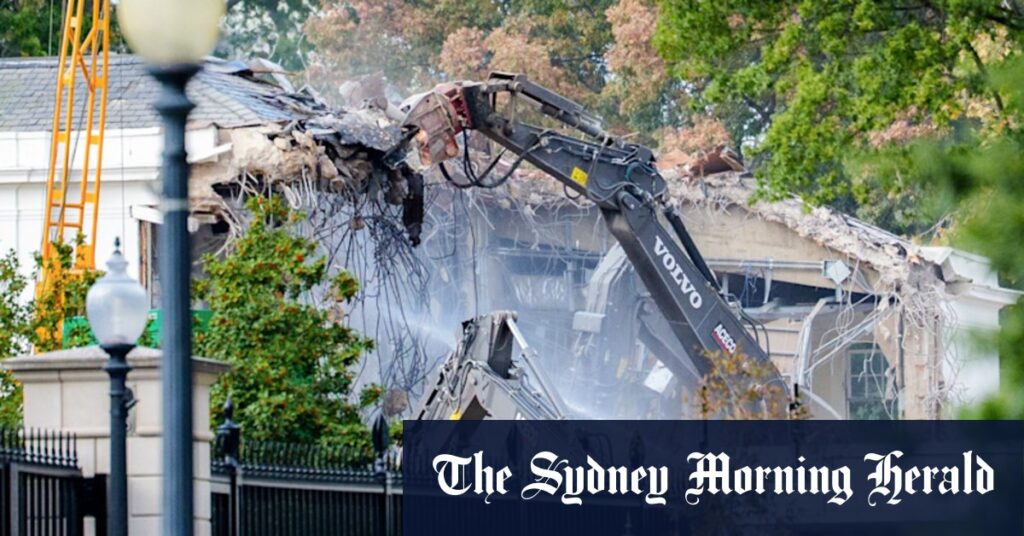
Washington: The historic East Wing of the White House is undergoing extensive demolition to make way for President Donald Trump’s new $300 million ballroom. This development has shocked many, as Trump had initially promised that the project would not involve tearing down the existing structure. Bulldozers began their work on Monday, coinciding with a meeting between Prime Minister Anthony Albanese and Trump in the West Wing.
The East Wing, traditionally home to the first lady’s offices and the White House social office, is being dismantled to accommodate a new ballroom capable of hosting 1,000 guests. This move has drawn criticism from historians and preservationists, especially since Trump had assured the public in July that the project “won’t interfere with the current building.”
Historic Preservation Concerns
Trump defended the decision, stating that after consultations with architects, “really knocking it down” was deemed the best option. He minimized the significance of the East Wing, noting that it had been altered significantly since its addition by Franklin D. Roosevelt during World War II. “There was not much left from the original,” Trump remarked, adding that the building had undergone various changes over the years.
Stewart McLaurin, president of the White House Historical Association, acknowledged the White House’s history of change, noting that modifications have often sparked controversy. The National Trust for Historic Preservation has expressed concerns about the new ballroom’s impact on the White House’s classical design. Carol Quillen, the trust’s president, called for a halt to the demolition until a public consultation is completed.
“While the National Trust acknowledges the utility of a larger meeting space at the White House, we are deeply concerned that the massing and height of the proposed new construction will overwhelm the White House itself,” Quillen wrote.
Trump’s Vision and Financial Backing
Trump has emphasized that the new ballroom will be “one of the great ballrooms anywhere in the world,” funded entirely by himself and private donors, with no government expenditure involved. He highlighted the need for a larger venue, pointing out that the East Room, the largest space currently available, can only accommodate 200 people. This limitation often forces event guests to be seated in temporary marquees on the south lawn.
Addressing accusations of a lack of transparency, Trump displayed images of the planned ballroom, insisting that he has been open about the project. “I haven’t been transparent? Really? I’ve shown this to everybody that would listen,” he stated, dismissing criticism from those he labeled as inattentive reporters.
Public Reaction and Historical Context
The demolition has not gone unnoticed by the public, with tourists stopping to observe the work in progress. Catheryn Koss, a visitor from California, expressed her dismay at the project, citing it as a “total waste of money” and a sign of disrespect for historical landmarks.
This significant alteration to the White House is part of a broader pattern of changes initiated by Trump since his return to office. As a real estate developer with a history of constructing luxury properties, Trump’s approach to the White House reflects his penchant for grandiose projects.
“I think there’ll be nothing like it,” Trump said of the new ballroom. “This obviously would be the biggest change … in order to do it properly, we had to take down the existing structure.”
The decision to demolish the East Wing for a new ballroom underscores the ongoing tension between historical preservation and modernization. As the project progresses, it remains to be seen how these changes will be received by the public and historians alike.







